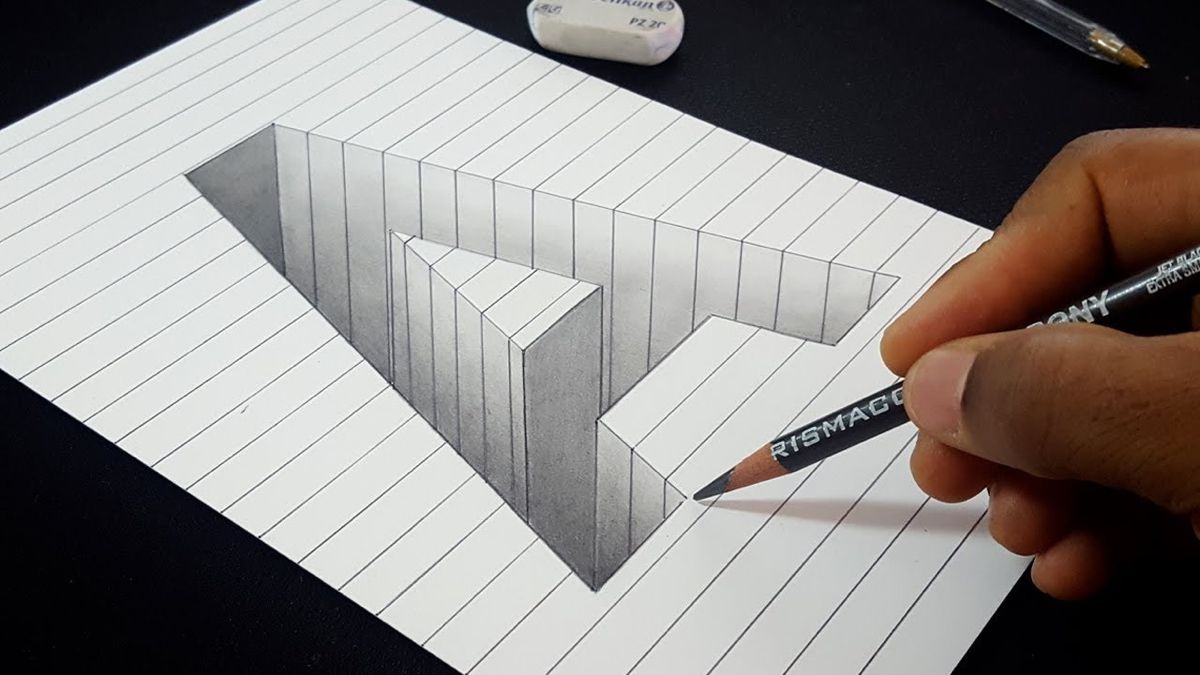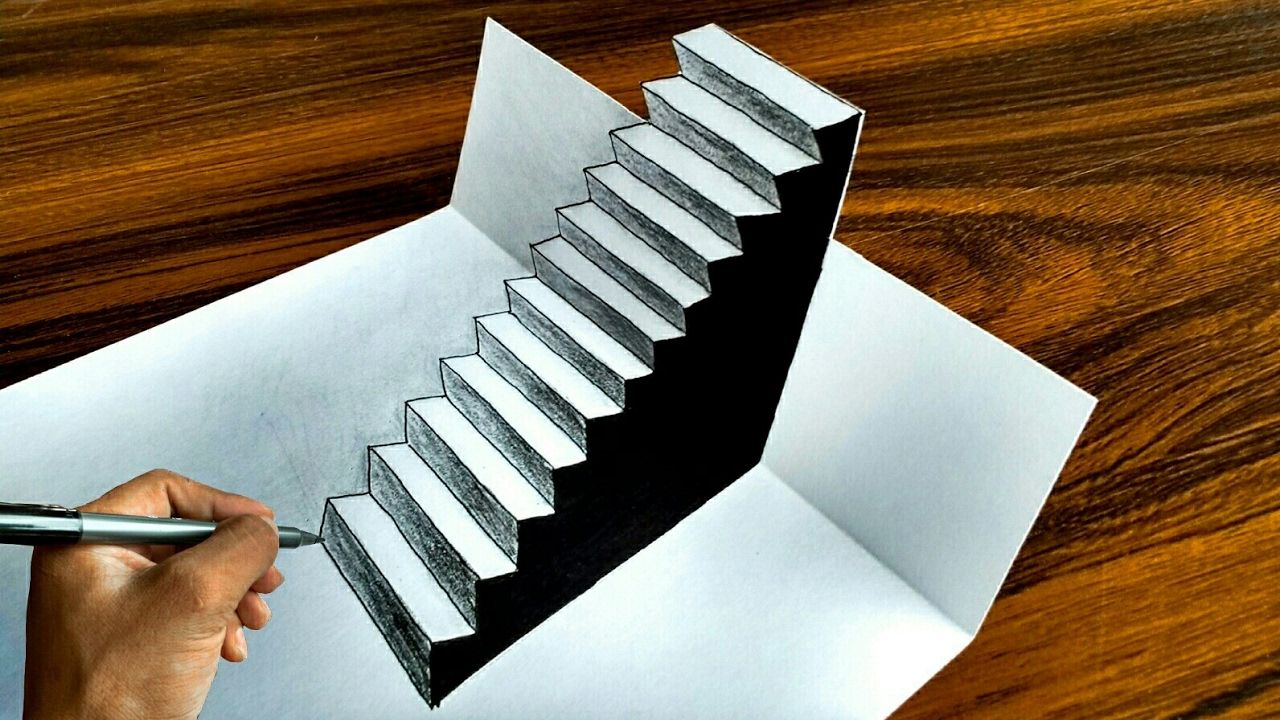Are you fascinated by the world of three-dimensional art? If you've ever wanted to create stunning 3D drawings that leap off the page, you're in the right place! This guide is perfect for beginners who are eager to dive into the world of 3D drawing. We'll walk through the essential concepts, tools, and techniques that will help you transform your ideas into captivating visual experiences. So, let's get started on this artistic journey!
Choosing the Right Tools for 3D Drawing

Before you start sketching those mesmerizing 3D visuals, it's crucial to select the right tools for the job. The right tools can truly enhance your drawing experience and make the learning process more enjoyable. Here are some of the most popular options to consider:
1. Traditional Drawing Tools
If you love the tactile experience of art, traditional tools can be your best friends. Here’s a list of some essentials:
- Pencils: A good set of pencils with varying hardness helps create different depths and shadows.
- Erasers: A kneaded eraser can help you highlight areas and erase mistakes easily.
- Paper: Choose thicker paper like Bristol board to withstand multiple layers of shading.
- Rulers and Compasses: These are handy for creating geometric shapes and initial guidelines.
2. Digital Drawing Tools
If you prefer working digitally, there are numerous software programs and hardware options available:
| Tool | Features | Best For |
|---|---|---|
| Adobe Illustrator | Vector capabilities, perspective grids | Precision and scaling |
| Autodesk SketchBook | Intuitive interface, versatile brushes | Freeform sketching |
| Procreate | Layered drawing, customizable brushes | iPad users, portability |
| 3D Modeling Software | Creates three-dimensional objects | Advanced artists looking to combine drawing and modeling |
Choosing the right tools can set the foundation for your 3D drawing journey. No matter your preference, each tool has something unique to offer. So, explore these options and find what works best for you!
Also Read This: How to Verify Your Facebook Account on Dailymotion
Basic Techniques for 3D Drawing

Creating stunning 3D drawings might seem daunting at first, but with some fundamental techniques, you can easily bring your ideas to life. Here are a few essential methods to get you started:
- Observation: The first step is to observe real-world objects closely. Look at how light interacts with surfaces, the shapes of the objects, and how they relate to one another in space.
- Line Work: Start with clean, precise lines. Use a light hand to sketch the basic shapes before adding details. The foundation is crucial in 3D drawing.
- Shading: This is where the magic happens! Use different shading techniques such as hatching, cross-hatching, and stippling. Pay attention to your light source—where the light comes from determines where the shadows fall.
- Perspective: Employing perspective is vital for depth. The two-point perspective is commonly used, where parallel lines converge at two points on the horizon line.
- Textures: Don’t forget about textures! Adding texture to surfaces can create a tactile feeling in your drawing. Think about how different materials like wood, metal, or fabric appear visually.
The combination of these techniques will develop your skills and give an illusion of depth and realism to your drawings. Remember, practice makes perfect—so don’t hesitate to experiment!
Also Read This: How to Make Dahi Bhalla at Home in Urdu: Easy Cooking Guide on Dailymotion
Step-by-Step Guide to Creating Your First 3D Drawing

Now that you’re familiar with some basic techniques, let’s dive into a simple step-by-step process that will help you create your first stunning 3D drawing!
- Choose Your Subject: Start by selecting a simple object, like a cube or a sphere. It’s essential to keep it uncomplicated as you learn.
- Sketch the Outline: Lightly draw the basic shape of your object. Use geometric shapes as your base—remember, this is just a guideline!
- Add Perspective Lines: Draw the horizon line, then add two vanishing points for your perspective. Connect these points to the corners of your shapes to create depth.
- Refine Your Drawing: Go over your initial lines, adding detail and depth. Start defining surfaces and angles by making adjustments to your shape.
- Shade Your Drawing: Begin shading with a light hand. Observe how light falls on your object and add shadows accordingly. Use various techniques to create texture.
- Add Final Touches: Check for any discrepancies and correct them. Darken areas that need more contrast and add highlights where light reflects off surfaces.
Now, step back and admire your work! Creating 3D drawings takes time and practice, but following this guide will give you a great start on your artistic journey.
Also Read This: How to Straighten Your Hair at Home Using Dailymotion Tutorials
5. Tips and Tricks for Enhancing Your 3D Drawings
Creating stunning 3D drawings can be a bit challenging, but with a few handy tips and tricks, you can elevate your artwork from good to breathtaking. Here are some practical strategies to get you started:
- Understand Light and Shadow: Pay attention to how light interacts with your shapes. Adding shadows can create depth and make your drawings look more lifelike. Experiment with different light sources to see their effects on your work.
- Use References: Don’t hesitate to gather images or objects to use as references. Studying real-life examples helps you understand the proportions and perspectives that lend realism to your drawings.
- Experiment with Textures: Incorporating textures into your 3D drawings adds another layer of realism. Think about how different materials behave, like the smoothness of glass versus the roughness of stone.
- Practice Perspective: Make sure you grasp the fundamentals of perspective drawing. Utilizing one-point, two-point, and three-point perspectives can dramatically change the way your scenes look.
- Layer Your Work: If possible, work in layers. This not only makes it easier to make adjustments without starting over, but it also allows you to add details without overwhelming your drawing initially.
Remember, practice makes perfect! The more you draw, the more intuition you'll develop for creating visually appealing 3D art.
Also Read This: How to Resize PDF Images with Simple Tools
6. Exploring 3D Drawing Software Options
In today's digital age, many artists rely on software to take their 3D drawings to the next level. There are plenty of options out there, each with its own set of features, pros, and cons. Here’s a quick rundown:
| Software | Best For | Price |
|---|---|---|
| SketchUp | Beginner and professional architects, designers | Free/Pro version from $299 |
| Blender | 3D modeling, animation, and rendering | Free |
| Tinkercad | Starter-level 3D modeling | Free |
| Autodesk Fusion 360 | Product design and engineering | Free for students, starts at $495/year |
| Maya | Professional-grade animations and models | $1,700/year |
When choosing software, consider your skill level, budget, and what you want to achieve with your artwork. Many programs offer trial versions, so don’t hesitate to try a few before settling on the one that feels just right for you!
Also Read This: How to Watch a Private Video on Dailymotion: Access Restricted Content
7. Common Mistakes to Avoid in 3D Drawing
Diving into the world of 3D drawing can be incredibly exciting, but it's easy to make mistakes along the way. Here are some common pitfalls to watch out for:
- Ignoring Proportions: One of the most crucial aspects of any drawing is getting the proportions right. A common mistake is drawing elements that are out of scale with one another, which can make your 3D drawing look artificial.
- Underestimating Depth: Always remember that 3D art is about creating depth. A common error is making everything look flat. Incorporate techniques such as overlapping objects, varying sizes, and shadows to give your drawing a more realistic feel.
- Too Much Detail: While it’s tempting to add tons of intricate details, overwhelming your drawing can take away from the overall impact. Focus on key features that define your shapes and leave some elements less detailed for contrast.
- Neglecting Lighting: Lighting can make or break your drawing. A frequent mistake is not considering light sources and how they interact with your objects. Use shading wisely to enhance the three-dimensional effect.
- Skipping the Sketching Phase: Jumping straight into detailed rendering without a solid sketch can lead to unbalanced compositions. Take the time to plan your drawing before diving in.
- Forgetting to Practice: Lastly, don't confuse initial frustration with lack of skill. 3D drawing takes practice. Don't be discouraged—keep working at it!
By steering clear of these common mistakes, you can set a solid foundation for your 3D drawing skills and enhance your creative journey.
8. Conclusion and Next Steps
Congratulations, you've taken a significant step towards mastering the art of 3D drawing! It can feel overwhelming at times, but remember, every expert was once a beginner. Here’s a quick recap and what you can do next:
- Recap of Key Points:
- Start with basic shapes to understand the foundations.
- Focus on proportions, depth, and lighting.
- Practice sketching before moving to details.
- Avoid common pitfalls that could hinder your progress.
- Next Steps:
- Set aside time regularly to practice 3D drawing.
- Participate in online forums or local art groups for feedback and motivation.
- Explore tutorials online, like Dailymotion videos, to further enhance your skills.
- Don't hesitate to experiment with different styles and techniques!
Remember, art is not just about perfection; it’s about expression and exploration. So grab your materials and start creating! Your stunning 3D masterpieces await!
 admin
admin








